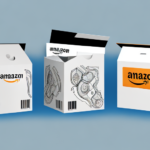Introduction to Amazon Fulfillment Services
Amazon offers a variety of fulfillment options to help sellers efficiently store, manage, and ship their products. Understanding these options is crucial for optimizing costs and ensuring a seamless selling experience on the platform.
Fulfillment by Amazon (FBA)
Fulfillment by Amazon (FBA) allows sellers to store their products in Amazon’s fulfillment centers. Amazon handles the picking, packing, shipping, and customer service, providing sellers with access to Amazon Prime customers and benefiting from Amazon’s reliable logistics network. As of 2023, FBA remains a popular choice for sellers looking to scale their business without managing physical inventory.
Fulfillment by Merchant (FBM)
Fulfillment by Merchant (FBM) gives sellers complete control over their inventory and shipping processes. Sellers are responsible for storing their products, managing orders, and providing customer service. This option is ideal for those who have the resources to handle logistics independently and prefer greater control over their fulfillment operations.
Multi-Channel Fulfillment (MCF)
Multi-Channel Fulfillment (MCF) enables sellers to use Amazon’s fulfillment network to ship orders from other sales channels, such as their own websites or other marketplaces. This service helps streamline operations by consolidating fulfillment processes across multiple platforms.
Seller Fulfilled Prime (SFP)
Seller Fulfilled Prime (SFP) allows sellers to offer Prime-eligible shipping directly from their own warehouses. To qualify, sellers must meet Amazon’s rigorous performance standards for shipping and customer service. SFP provides the benefits of Prime without relying solely on Amazon’s fulfillment centers.
Breakdown of Amazon Fulfillment Costs
Understanding the various costs associated with Amazon’s fulfillment services is essential for managing profitability and making informed business decisions.
Fee Structure for FBA
FBA fees are comprised of several components, including:
- Fulfillment Fees: Charged per unit based on size and weight. For example, a standard-size item might incur a fulfillment fee of $2.50 per unit.
- Storage Fees: Calculated based on the volume of inventory stored, typically around $0.75 per cubic foot per month.
- Additional Service Fees: Applicable for services like labeling, packaging, and removal of inventory.
For detailed and up-to-date fee information, refer to Amazon’s FBA Fee Schedule.
Factors Influencing Fulfillment Fees
Several factors impact the cost of Amazon fulfillment, including:
- Product Dimensions and Weight: Larger and heavier items incur higher fees.
- Storage Duration: Long-term storage fees apply to products stored for over 365 days.
- Seasonal Demand: Increased inventory during peak seasons may lead to higher storage costs.
Hidden Costs to Consider
Beyond the standard fees, sellers should be aware of potential hidden costs such as:
- Long-Term Storage Fees: Additional charges for inventory that remains unsold for extended periods.
- Return Processing Fees: Costs associated with handling returned items.
- Advertising Expenses: Costs for promoting products through Amazon’s advertising platforms.
Strategies to Manage and Reduce Fulfillment Costs
Implementing effective strategies can help sellers minimize fulfillment expenses and enhance overall profitability.
Optimizing Inventory Management
Maintaining optimal inventory levels prevents excessive storage fees and reduces the risk of stockouts. Utilize Amazon’s Inventory Performance Index (IPI) to monitor and manage inventory efficiently.
Effective Pricing Strategies
Strategic pricing can balance sales velocity and profit margins. Consider using dynamic pricing tools to adjust prices based on competition and demand, ensuring competitiveness without eroding profits.
Leveraging Inventory Management Tools
Invest in inventory management software to gain insights into sales trends, forecast demand, and automate reordering processes. Tools like Jungleworks and Inventory Source can enhance inventory accuracy and reduce carrying costs.
Comparison of Fulfillment Options
Choosing the right fulfillment method depends on various factors, including cost, control, and scalability.
FBA vs. FBM: Advantages and Disadvantages
- FBA Advantages: Access to Prime customers, reduced shipping and handling burden, scalable for high-volume sales.
- FBA Disadvantages: Higher fees, less control over packaging and shipping, potential long-term storage fees.
- FBM Advantages: Greater control over inventory and shipping, potentially lower costs for certain products.
- FBM Disadvantages: Requires more operational effort, limited access to Prime customers unless enrolled in SFP.
Exploring Alternative Fulfillment Providers
Alternative fulfillment providers like ShipBob and Rakuten Super Logistics offer competitive pricing and specialized services. These providers can be cost-effective alternatives to FBA, especially for sellers with unique fulfillment needs or those seeking to diversify their logistics partners.
Future Trends and Predictions in Amazon Fulfillment
Staying informed about emerging trends can help sellers adapt to changes and stay competitive.
Emerging Technologies
The integration of robotics and artificial intelligence in fulfillment centers is expected to increase efficiency and reduce operational costs. Automation technologies can streamline picking and packing processes, minimizing errors and speeding up delivery times.
Anticipated Changes in Fee Structures
As Amazon continues to expand its services, there may be adjustments to fee structures to account for rising operational costs. Sellers should regularly review fee updates and adjust their pricing and inventory strategies accordingly.
Best Practices for Amazon Sellers
Adopting best practices ensures sellers can effectively manage fulfillment costs and enhance their overall business performance.
Avoiding Common Mistakes
Common pitfalls include overstocking inventory, neglecting to monitor fee changes, and inadequate product listing optimization. Avoiding these mistakes can prevent unnecessary expenses and improve sales performance.
Negotiating Lower Fees
High-volume sellers may have the leverage to negotiate lower fulfillment fees with Amazon. Demonstrating consistent sales performance and maintaining excellent seller metrics can provide bargaining power for better rates.
Optimizing Product Listings
Well-optimized product listings attract more buyers and reduce return rates. Use high-quality images, detailed descriptions, and relevant keywords to enhance visibility and conversion rates. Tools like Helium 10 and Jungle Scout can assist in optimizing listings for better performance.
Conclusion
Understanding and effectively managing Amazon fulfillment costs is essential for maintaining profitability and ensuring the sustainability of your business on the platform. By leveraging strategic inventory management, optimizing pricing, and exploring alternative fulfillment options, sellers can minimize expenses and maximize their success in the competitive Amazon marketplace.






















